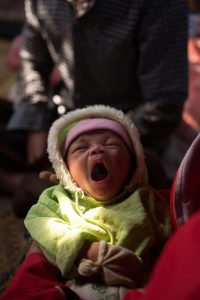
Peth, 24, and Keng, 21, Viengkham district. Just 17 days before this image was taken Peth nearly died giving birth to her baby boy after suffering a post-partum haemorrhage. The staff at the district health centre drove for two hours to pick her up from her village and take her to receive care. Both her and her baby are now at home.
Background
The newborn and child death associated with inadequate post-natal health checks continued to be a significant issue across the world. This study aimed to assess the socioeconomic inequalities in post-natal health checks for the newborn in Vietnam in 2014.
Methods
We used the secondary data from the Multiple Indicator Cluster Survey in 2014. We included women aged 15–49 years who had a live birth within two years of the time of the interview. We estimated the concentration index to measure socioeconomic inequalities post-natal health checks for the newborn. We conducted multiple logistic regression analysis to identify factors associated with post-natal health checks for the newborn.
Results
Overall, the proportion of post-natal health checks for the newborn in Vietnam was 89.1%. The concentration index of post-natal health checks for the newborn was positive at 0.06. It indicated that the newborns in the rich households were more likely to get post-natal health checks as compared to in the poor households. The common factors significantly associated with the higher percentage of post-natal health checks for the newborn were women belonging to the Kinh and Hoa ethnic, higher education, and wealthier groups.
Conclusion
Socioeconomic inequalities in post-natal health checks for the newborn in Vietnam were not strong, but it still existed. Thus, we recommended that policy efforts to increase access to post-natal health services for poor women. In addition, there is a need to improve access to post-natal health services for women belonging to minor ethnic group and low education.